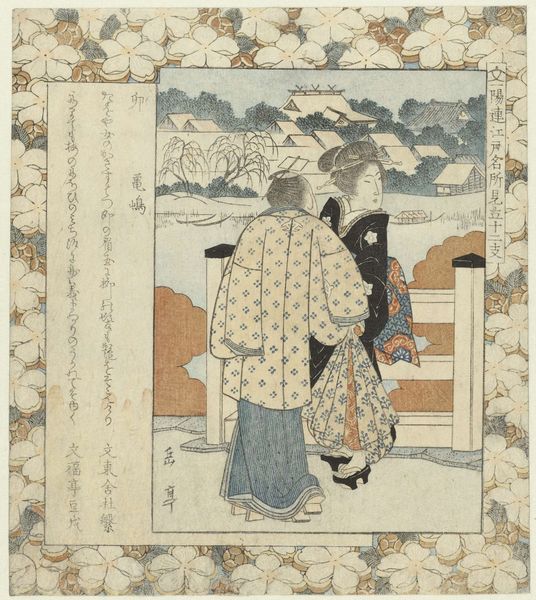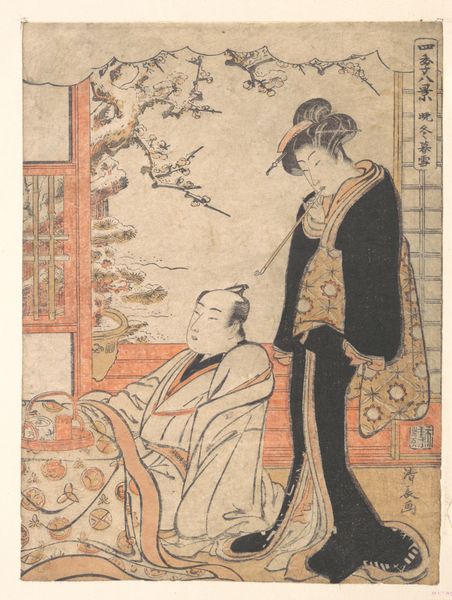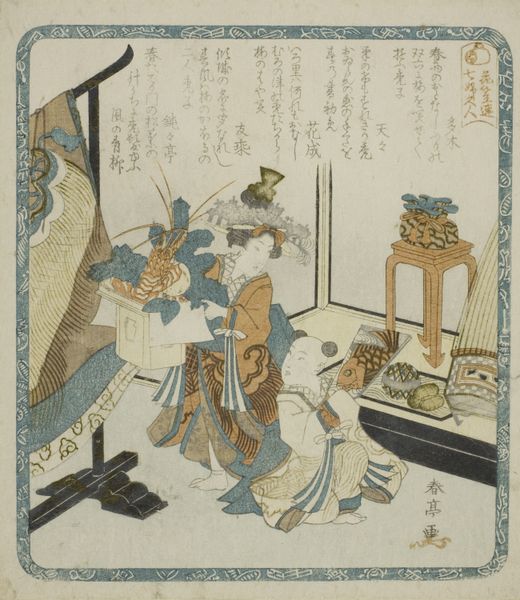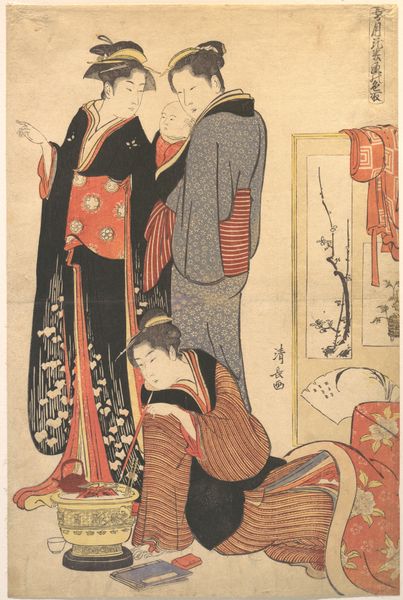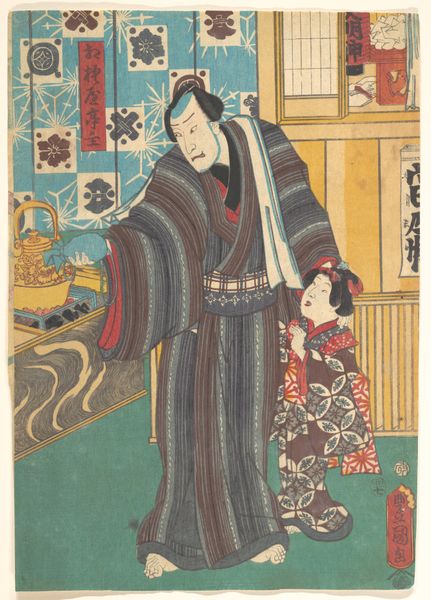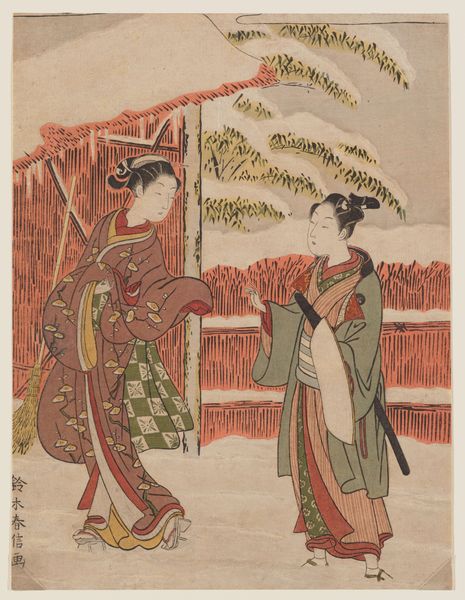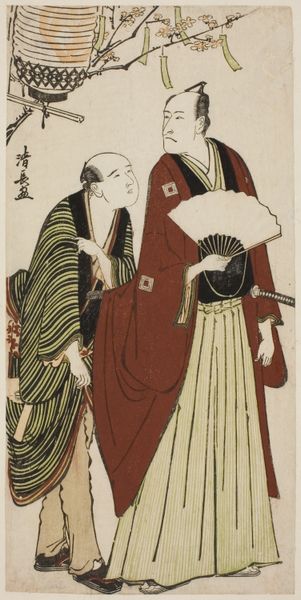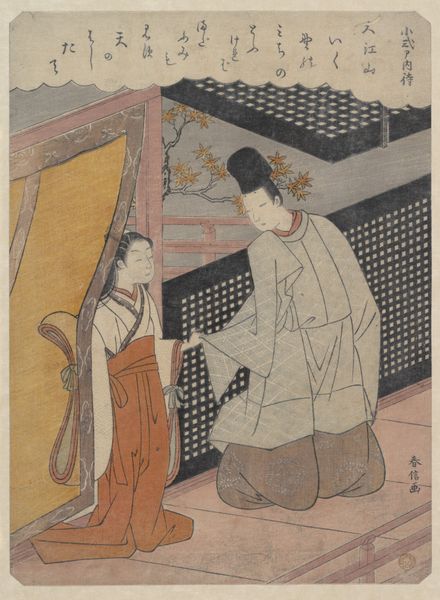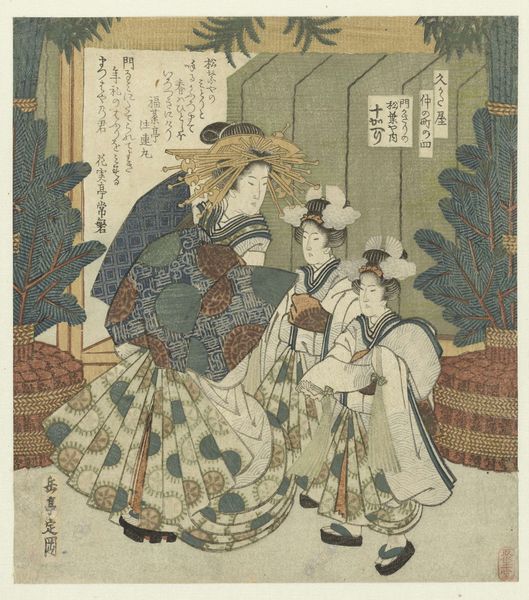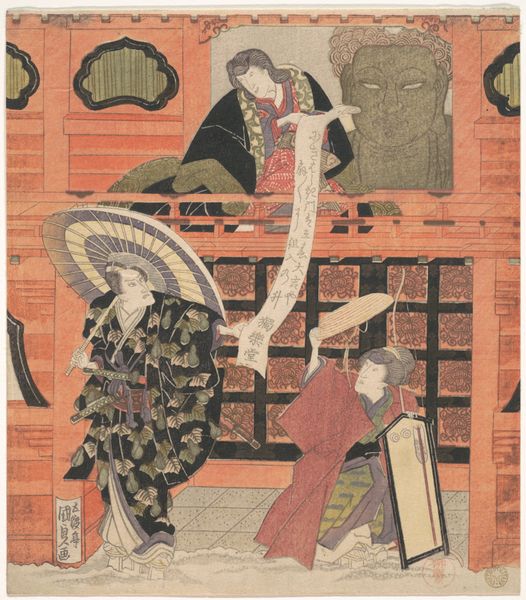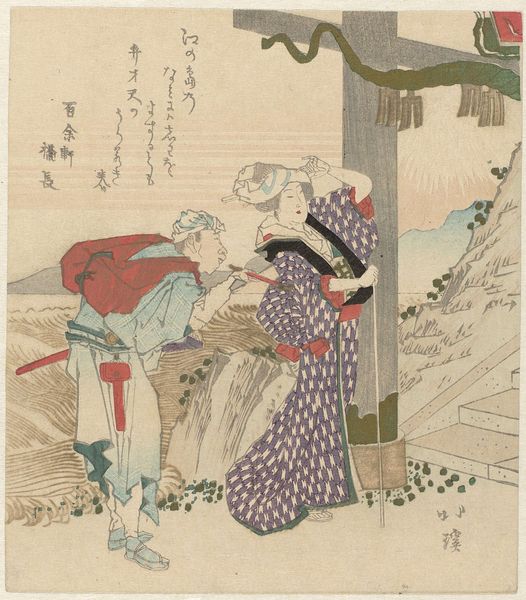
Monkey: Koshindo Hall at Takanawa (Saru, Takanawa Koshindo), from the series "Famous Places in Edo Compared to the Twelve Signs of the Zodiac for the Ichiyo Circle (Ichiyoren Edo meisho mitate junishi)" c. 1827
0:00
0:00
#
water colours
# print
#
asian-art
#
ukiyo-e
#
cityscape
#
genre-painting
Dimensions: 22.1 × 19.5 cm
Copyright: Public Domain
Curator: This print is by Yashima Gakutei, created around 1827. It’s titled "Monkey: Koshindo Hall at Takanawa," part of a series comparing famous Edo places to the twelve signs of the zodiac. It employs traditional watercolours and printing techniques characteristic of ukiyo-e. Editor: The first thing that strikes me is the geometric dance between the hard, flat blacks of the background, setting off the softer colour layers. It gives the figures a striking visual presence! Curator: Absolutely. Look closely, and you'll see how Gakutei uses the materials to evoke atmosphere and place. Consider the paper itself – its texture absorbs the ink, softening the edges and creating depth within this cityscape scene. Editor: Notice how the arrangement of colour and the textures guides your eye through the composition. The darker shades and sharp lines around the figures provide form, juxtaposed with the muted background temple architecture. Curator: The choice of materials, including the inks and the woodblocks used for the print, were carefully selected by artisans involved in this creative economy, contributing to the overall aesthetic and communicating status. The print connects us to the network of production within the vibrant world of Edo-period art and culture. Editor: What I find interesting is how this framework emphasizes surface, form, and the delicate colour interactions. The patterned borders, the stark contrasts of light and shadow – these all contribute to a dynamic visual structure, wouldn’t you agree? Curator: Indeed, and each element involved considerable labor, from the selection of the paper, to the work of each of the artists within Gakutei's workshop who had to ensure it conformed to these very forms. These elements aren't merely aesthetic choices; they tell us about Edo period taste, leisure, commerce and social rituals. Editor: Thinking about the artwork's formal aspects offers such a distinctive lens to appreciate its elegance and enduring visual appeal, wouldn’t you agree? Curator: Seeing the processes through which this print came to be, reminds us that art does not just come into being from the vision of the artist, but from entire worlds of making.
Comments
No comments
Be the first to comment and join the conversation on the ultimate creative platform.
